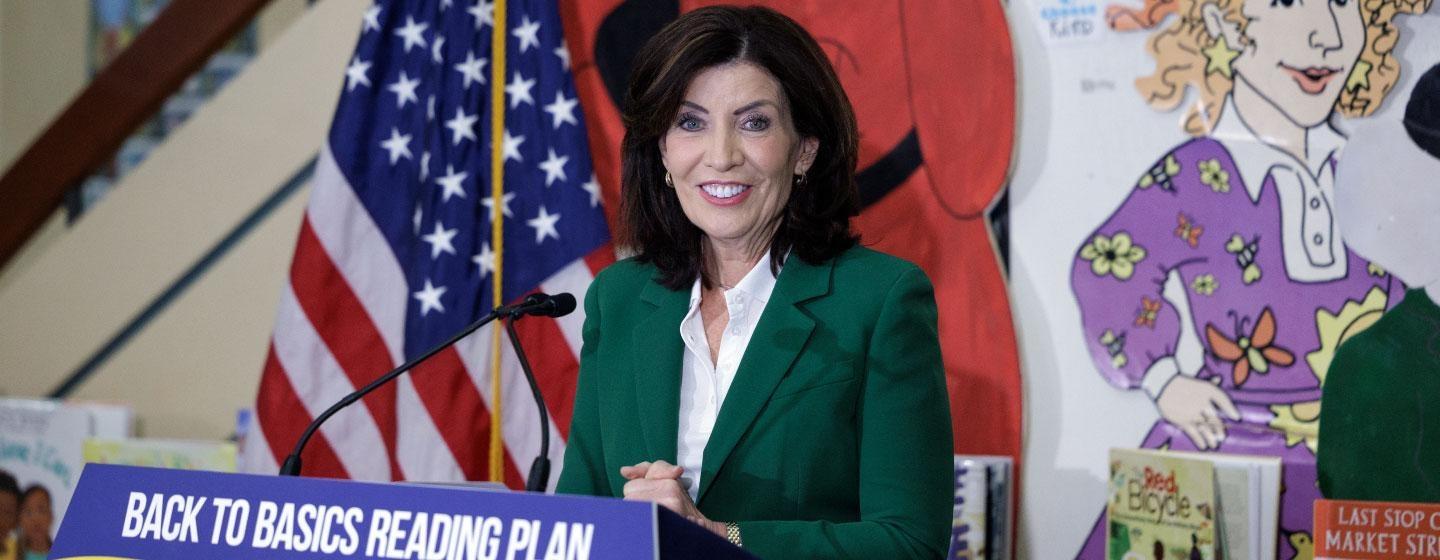Change in the New State Budget Could Improve Reading Scores Among New York’s Children, Hochul Says

Gov. Kathy Hochul on Friday highlighted changes in New York’s reading curriculum that were approved as part of the state budget and said she hopes it will improve low reading scores among elementary school children.
Beginning as early as this fall, children will be taught to read using the phonics method. The technique teaches reading by having the student “sound out” the word. It was common during the middle of the last century, but it fell out of favor as what’s known as the “whole word” method, which involves memorizing the entire word, took over.
Hochul said data shows that the method greatly improves children’s reading skills, and she said the state will now return to it as part of her “back to basics” plan.
She spoke at an Albany School of Humanities, a public magnet school for prekindergarten through sixth grade, where the phonics method has been taught since 2016.
“The numbers tell the story,” she said. “The number of Albany students in grades three through eight, passing the state ELA exam, has increased by nearly 50%. That's incredible.”
Hochul said 67% of third-graders in the school were found to be proficient in English, compared to the statewide average of just 45%. The state currently ranks in the lowest third of all 50 states for reading proficiency.
The new state budget requires that all schools adopt the phonics method by the 2025-26 school year. It also provides $10 million to train 20,000 teachers at the State University of New York at New Paltz, where a microcredentialing course in phonics is offered.
“SUNY New Paltz is perhaps the only place in the nation that has a microcredential in this, so we're sending teachers there to get this additional learning,” Hochul said. “And they're coming back and going right into schools.”
Hochul earlier dropped another education-related budget initiative.
She had wanted to end the provision known as “hold harmless,” which guaranteed that no school district received less money in the budget than it did the previous year. But the plan proved unpopular among school leaders and state lawmakers and was scrapped in favor of a study to examine the best way to redistribute school aid, based on whether a district is losing or gaining population.
Overall, the state is set to spend $36 billion on schools in the new fiscal year.
Related

New York Considers Medical Aid in Dying Act for Ninth Consecutive Year
State lawmakers are once again considering a bill that touches on some of the most difficult questions New Yorkers face.


